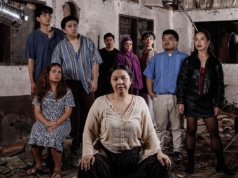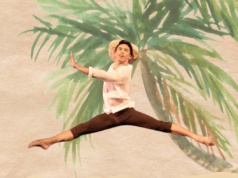by Noel Sales Barcelona
Despite the bad things happening in the Philippines like the unabated soaring prices of goods and services; the tragedy brought by the El Niño phenomenon; and the escalating dispute in the West Philippine Sea, to name a few—there still are good things to celebrate like the creative talents of the Filipino painters whose works are on display in Paseo Rizal, in Sitio Mayagay, Barangay Sampaloc in Tanay, Rizal.
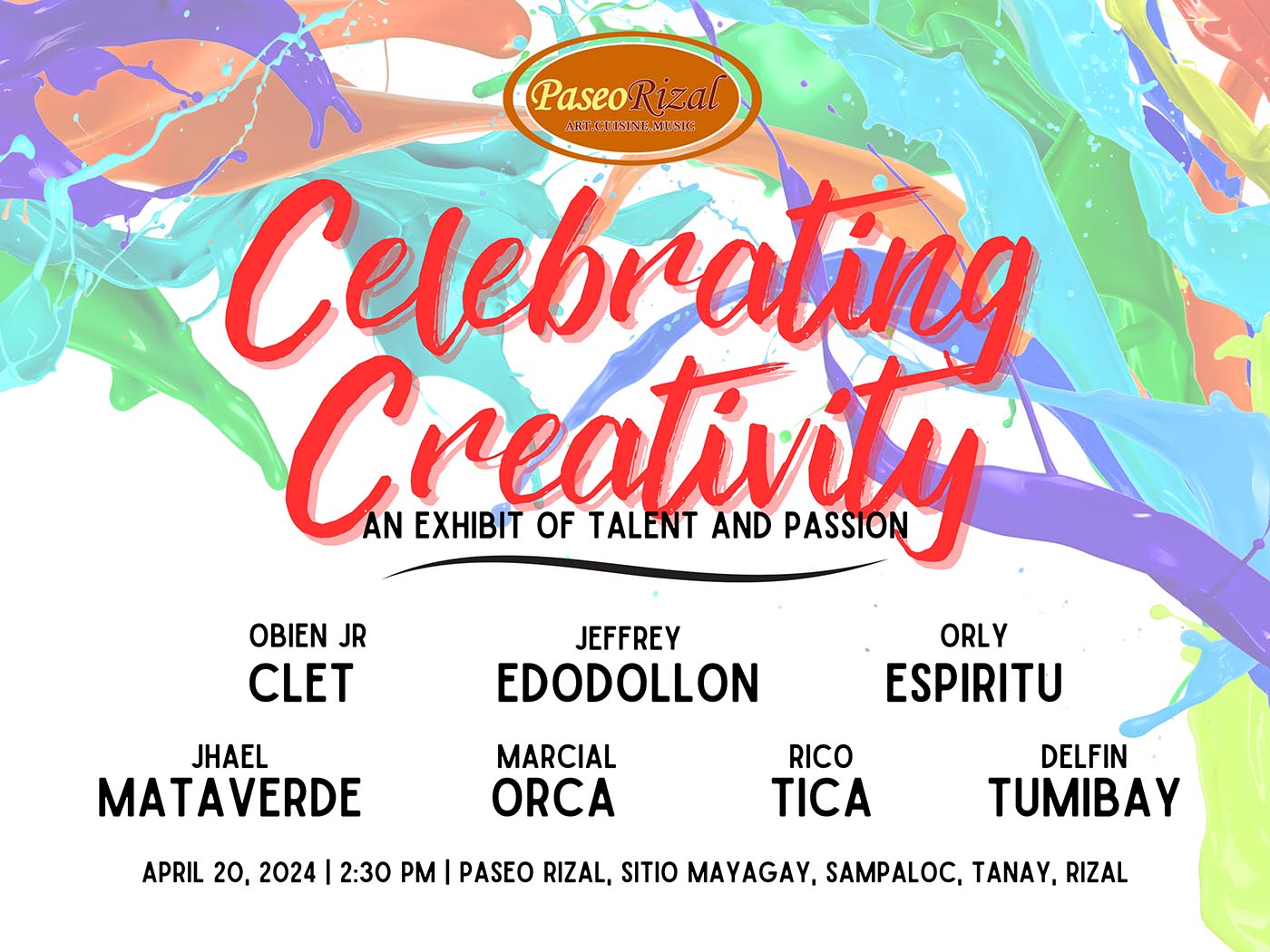
Obien S. Clet Jr., Jeffrey Edodollon, Orly Espiritu, Lei Espiritu, Jhael Mataverde, Marcial G. Orca, Rico Tica, and Delfin Tumibay have joined together to celebrate their artistic passion and creativity by launching a group exhibit at Paseo Rizal last April 20, 2024. With the title “Celebrating Creativity: An Exhibit of Talent and Passion,” the said exhibit is a festivity of colors, as these artists—all of them coming from the Province of Rizal—have decided to showcase their works, which prove that there is beauty in diversity.

Clet, who started as an art dealer in the early 2000s, has decided to venture into painting during the coronavirus pandemic in 2021. Admitting that he has no formal training in drawing, Clet was drawn into abstraction. With YouTube videos as his tutor, Clet has developed his unique style of abstraction, using the tilting method. His colors are usually deep and playful, producing images that give the audience a sort of pareidolia—but in a good way. Lei Espiritu, the child of Orly Espiritu, is also into abstraction. The depth of the colors and the way that this young artist executed their subject is amazing. As a critic, I can say that Lei has a bright future as an artist.

Orly Espiritu, on the other hand, has only a handful of works on display. Nonetheless, they show his skill and talent as a realist. His jeepney and church paintings reflect our culture as Filipinos. However, sad to say, the traditional jeepney may no longer be seen in the future as the jeepney modernization project of the Philippine government continues to push through, notwithstanding the protests of transport groups.
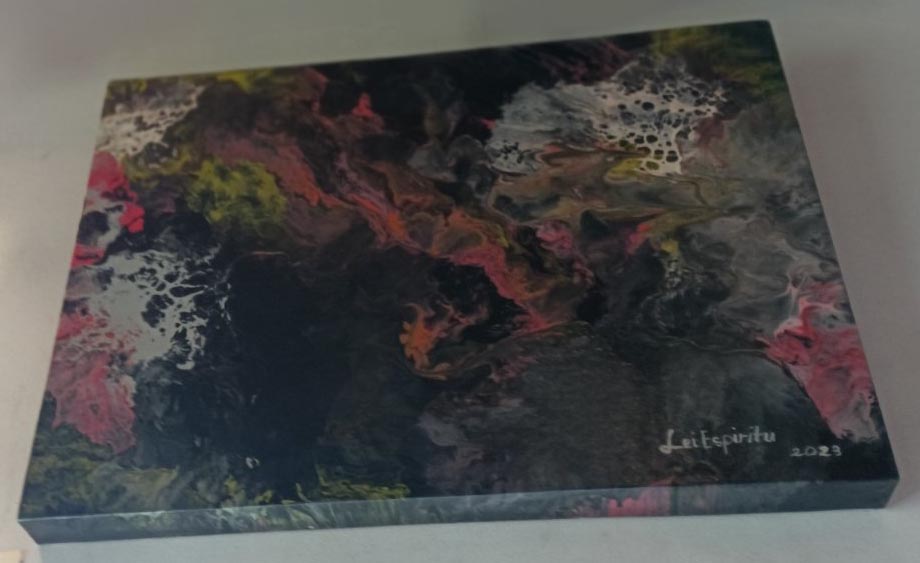
Mataverde, on the other hand, focused on still life and nature as the main subjects of his paintings. As part of his still life series, Mataverde painted ingredients for your favorite fish and vegetable dish aside from the usual vases, flowers, fruits, and laces which are the common themes for this genre.
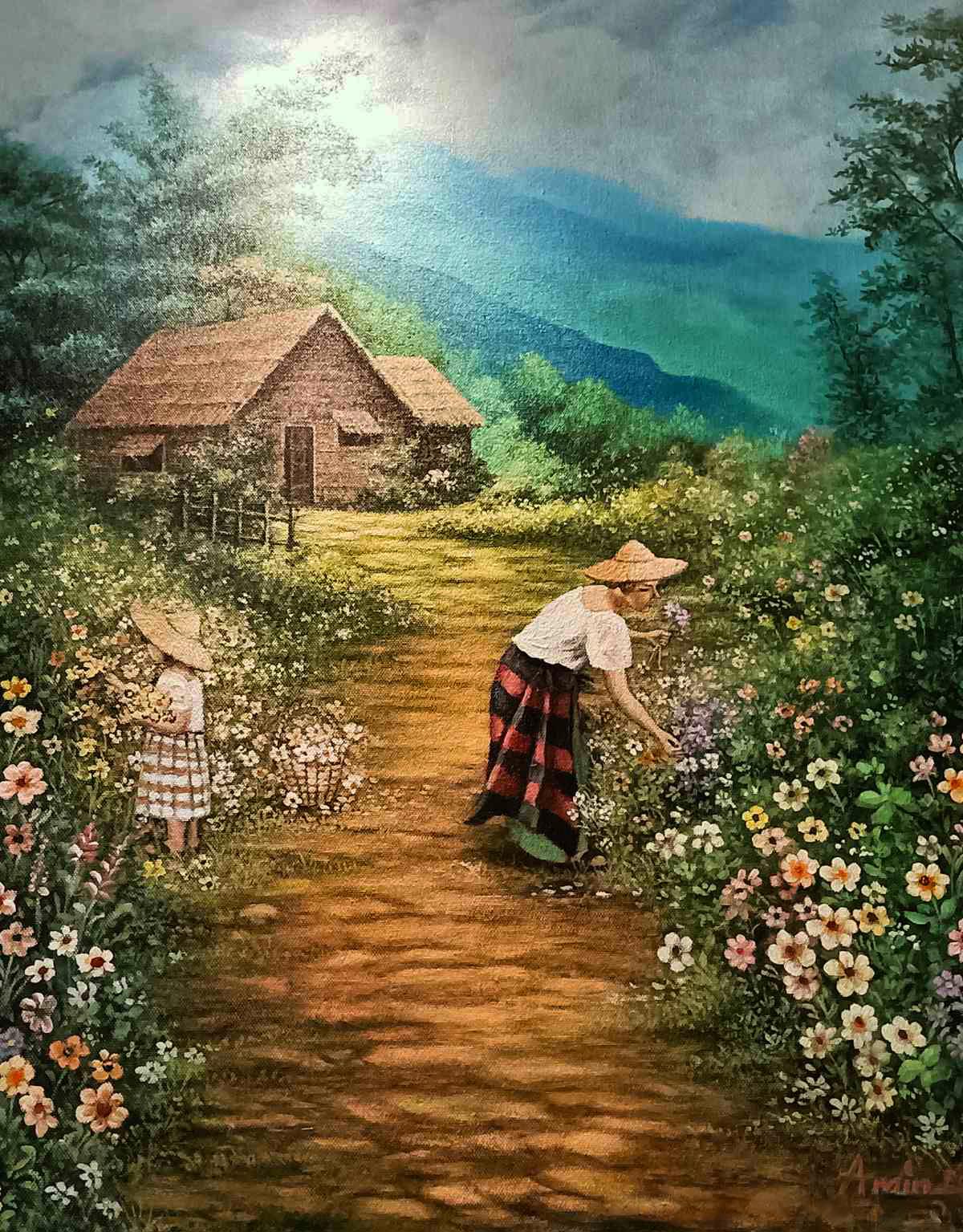
Orca and Tica, on the other hand, have only produced one work each but they were “statement” pieces. Orca is known for his well-detailed corn paintings, with slingshot, the traditional basket, and other agricultural produce as part of the ensemble. His almost 2-feet by 3-feet painting of golden corn still in its husks, makopa (Java apple), and cashew fruits is a symbol of abundance and proof of a farmer’s hard work. Tica, for his part, painted a beautiful painting of cattleyas, which is his forte. Tica, also a native of Tanay, is known for his detailed paintings of flowers from santan to poinsettia.
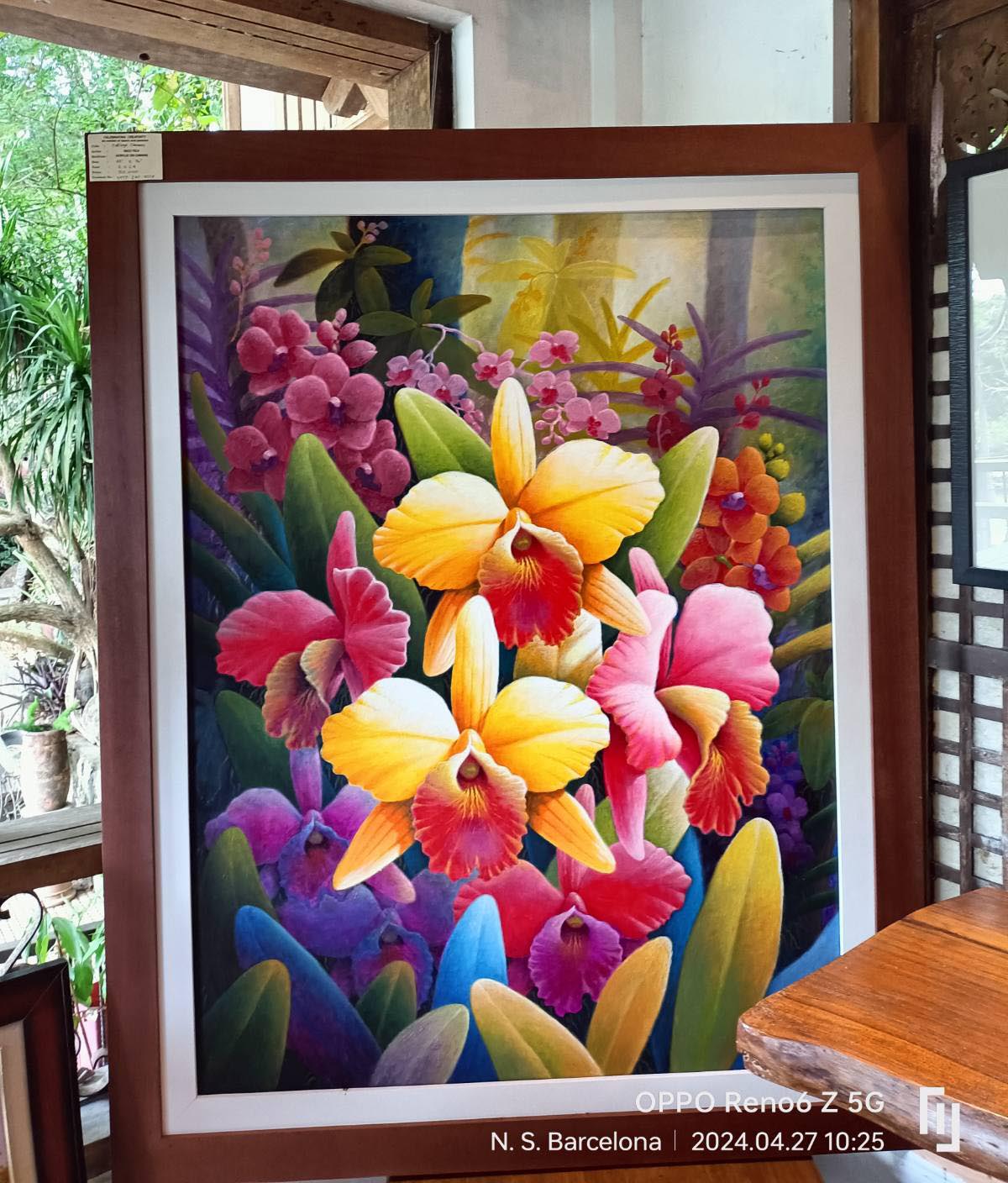
Tumibay, meanwhile, delighted the spectators with his unique paintings presenting the common folks—the child at play (the boy playing with a humongous firefly) and mother and child. One of the notable traits of Tumibay’s works is his unusual brushstrokes, akin to impressionism but modified, giving them that unusual effect. Tumibay, who is currently living in Binangonan, a municipality in Rizal, uses his paintings to comment on pressing issues, particularly poverty and injustice. Furthermore, his paintings are his way of celebrating the lives of ordinary people.

For Edodollon, this art exhibition is a means of a grand comeback. This Moslem realist painter tended to paint everyday things—jars, flowers, gardens, and nature. With bright and lively colors, Edodollon has given commonplace things and events an almost whimsical feel. As a spectator, I cannot wait what other things this painter who happened to train under the great Ibarra Dela Rosa can do.
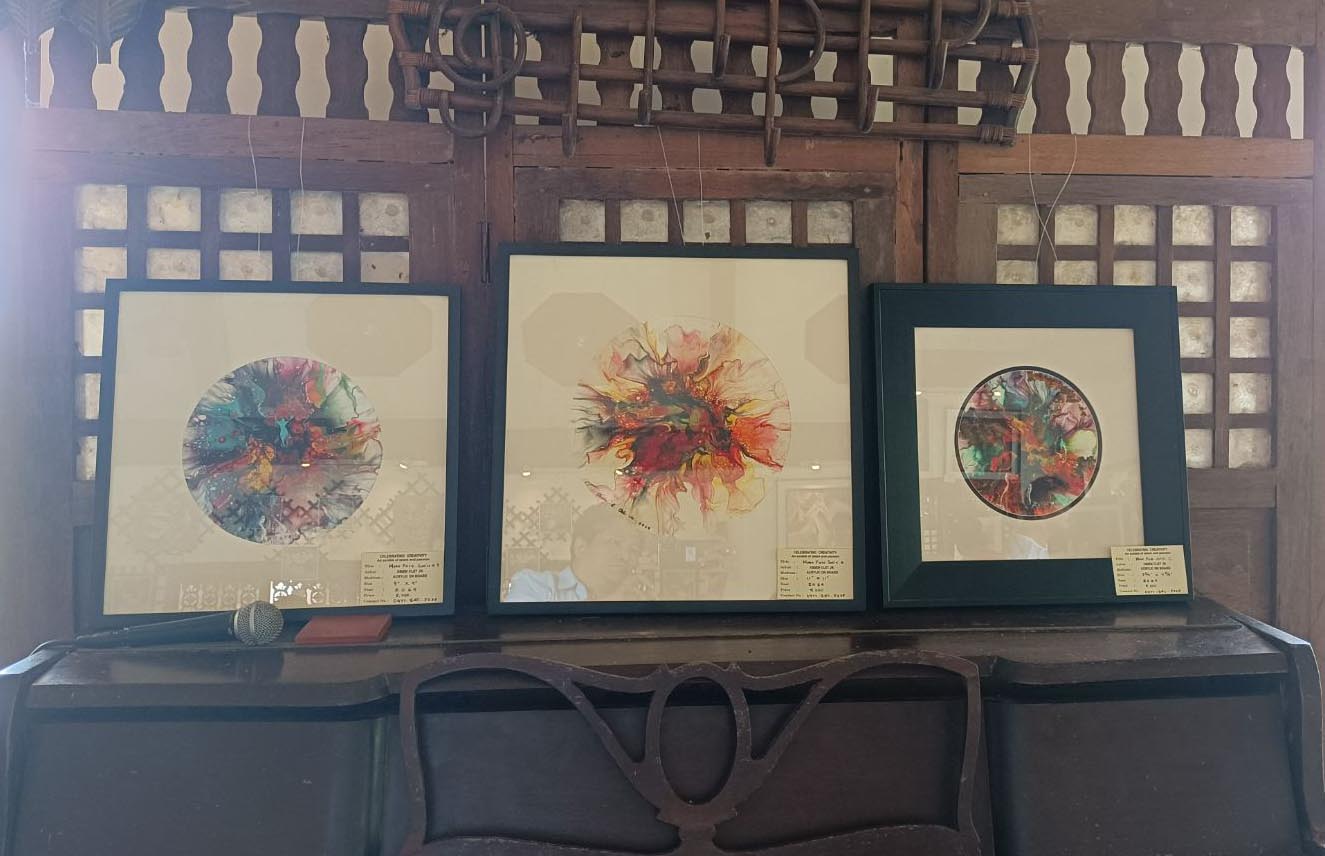
If you happen to be in Tanay and want to unwind, enjoy good food, and want to buy some artwork, Paseo Rizal in Mayagay is the place to go.







